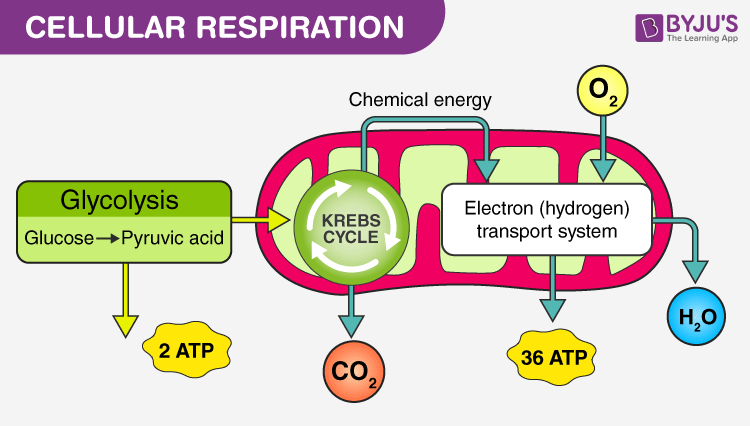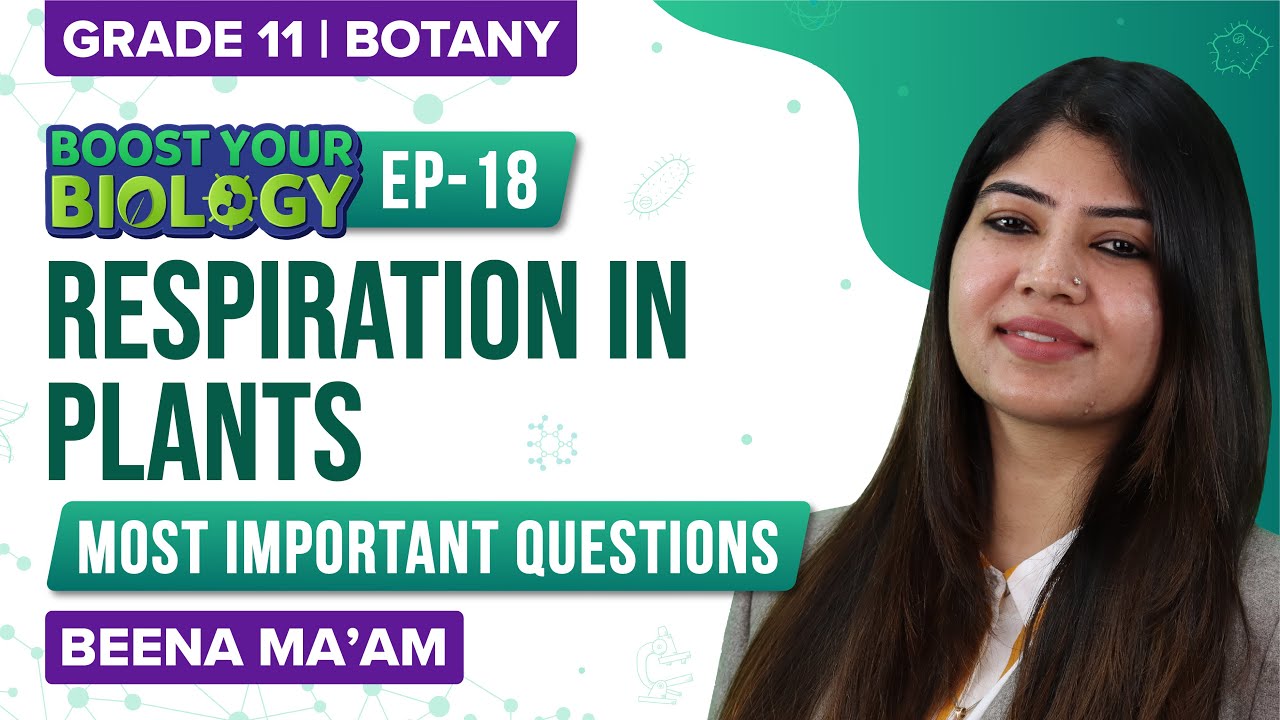ATP or adenosine triphosphate is the energy currency of cells or living organisms. It is required for various cellular activities such as active transport of ions, muscle contraction, cell signalling, synthesis of biomolecules, etc.
Download Complete Chapter Notes of Respiration in Plants
Download Now
ATP is primarily synthesised in the cellular respiration process. ATP is synthesised by the oxidation of respiratory substrates such as carbohydrates, lipids, proteins, etc. The oxidation of these results in energy production, which is stored in the form of high energy bonds in ATP.
Glucose is the main energy source in living organisms. During the process of aerobic respiration, the catabolism of glucose takes place in three steps, which are glycolysis, Krebs Cycle or TCA cycle and oxidative phosphorylation.
Most ATP formation takes place in the electron transport chain by oxidative phosphorylation. The enzyme ATP synthase catalyses the synthesis of ATP.

ATP Synthesis Pathways
Glycolysis
Glycolysis is the first step of cellular respiration occurring in all living organisms. Some anaerobic organisms and also some mammalian cells depend only on this process for fulfilling their energy needs.

It is a multi-step enzyme catalysed process, where glucose is converted into two molecules of pyruvate. Glycolysis does not require oxygen. It occurs in two phases, the first phase is the preparatory phase where 2 molecules of ATPs are utilised and the second phase is the payoff phase where ATPs are produced.
In glycolysis, there is a net gain of 2 molecules of ATP and 2 molecules of NADH per glucose molecule. It occurs in the cytosol.
Also Check: Significance Of Glycolysis
Under aerobic conditions, the pyruvate is completely oxidised in the mitochondria. Pyruvate enters mitochondria and after oxidative decarboxylation, it is converted to acetyl CoA, which then enters the TCA cycle and undergoes complete oxidation.
During anaerobic conditions as in muscles during strenuous exercise, the oxygen supply is not sufficient enough, then pyruvate is reduced to lactate and NAD+ is regenerated to continue the glycolysis. Lactic acid fermentation is catalysed by lactate dehydrogenase (LDH).
Further reading: Types Of Fermentation
ATP Synthesis in Mitochondria
Pyruvate produced by glycolysis enters mitochondria. Pyruvate is completely oxidised to three molecules of CO2 in mitochondria.
Pyruvate undergoes oxidative decarboxylation in the mitochondrial matrix by the enzyme pyruvate dehydrogenase complex. NADH is produced in this reaction. The acetyl CoA thus produced enters the TCA cycle. Acetyl CoA is also produced in lipid metabolism.
TCA Cycle
The Tricarboxylic acid cycle (TCA) was described by Sir Hans Krebs. It is a multi-step enzymatic process, wherein acetyl CoA is oxidised and coenzymes are reduced. It occurs in the mitochondrial matrix.

In the TCA cycle, only one molecule of ATP (GTP) is produced but three molecules of NADH and one molecule of FADH2 (per cycle) are produced, which provide electrons for the electron transport chain and facilitate a large amount of ATP synthesis.
Also Check: Krebs Cycle
Oxidative Phosphorylation and Electron Transport Chain
Electron transport system and ATP synthase complex are present in the inner mitochondrial membrane of eukaryotes and plasma membrane of prokaryotes. It comprises a series of enzyme complexes. The electron transport results in the formation of a proton gradient across the membrane, which is utilised in the formation of ATP. Here oxygen acts as the terminal electoral acceptor.
In the electron transport system, electron transport is coupled with ATP synthesis by oxidative phosphorylation. The enzyme ATP synthase catalyses the reaction.

The electron transport system comprises four complexes. They are:
- Complex I – NADH dehydrogenase
- Complex II – Succinate dehydrogenase
- Complex III – Cytochrome bc1
- Complex IV – Cytochrome c oxidase
The transport of electrons in the respiratory chain is coupled to the synthesis of ATP by ADP and inorganic phosphate by the enzyme ATP synthase.
Electron transport through these complexes induces the pumping of protons from the matrix to the intermembrane space leading to the production of a proton gradient across the membrane. This energy is utilised in the synthesis of ATP by the ATP Synthase through chemiosmosis.
The amount of ATP synthesised in the respiratory chain depends on the electron donor oxidised. The oxidation of NADH produces 3 molecules of ATP, whereas the oxidation of FADH2 produces two molecules of ATP.
Read more: High energy compounds
ATP Synthase
ATP synthase is an enzyme complex that catalyses the synthesis of ATP. It is a type of ligase as it catalyses the formation of phosphodiester bonds.
The reaction is as follows:
ADP + Pi + 2H+(out) ⇌ ATP + H2O + 2H+(in)
The formation of ATP is energetically unfavourable, therefore it is coupled to an electrochemical gradient created during cellular respiration in the electron transport chain. The electrochemical gradient is formed by the difference in proton concentration across the inner mitochondrial membrane.
The facilitated diffusion of protons through the transmembrane channel of ATP synthase releases energy that causes conformational changes in the enzyme and leads to the formation of ATP molecules.
The ATP synthase is also sometimes referred to as complex V of the electron transport system.
It consists of two components:
- A transmembrane protein complex known as F0
- A peripheral protein complex known as F1
The F1 headpiece present peripherally contains the site of ATP synthesis. F0 is a channel protein and allows the diffusion of protons through it, down the electrochemical gradient.
ATP synthesis by chemiosmosis requires a membrane, proton pump, a proton gradient and the ATP Synthase. The transmembrane channel of ATP synthase facilitates the diffusion of protons back to the mitochondrial matrix. The energy released in the process activates ATP synthase and it catalyses ATP synthesis.
Two protons pass through the F0 channel from intermembrane space to the matrix of mitochondria for each ATP molecule synthesised.
On complete oxidation of one glucose molecule, theoretically, there is a net gain of 38 ATP molecules. There are various factors that influence this, such as many pathways occurring simultaneously, withdrawal of substrates from the pathway, alternative substrates entering the pathway at intermediary stages, ATP utilisation whenever required, etc. Hence, this calculation is based on assumptions and is not very valid for living systems.
ATP Synthesis in Chloroplast
During photosynthesis, ATP is synthesised in the plants by the ATP Synthase. ATP synthesis occurs through chemiosmosis. A proton gradient is created across the thylakoid membrane. Protons are accumulated in the thylakoid lumen as opposed to intermembrane space in the mitochondria.
A proton gradient is created by the following steps:
- The splitting of water in PSII leads to the accumulation of protons in the lumen.
- As a result of the movement of electrons through the photosystems. Protons are moved from the stroma to the lumen side of the membrane.
- Protons are used from the stroma to reduce NADP+ by the enzyme NADP reductase, which is present on the stroma side.

The above-mentioned steps create a proton gradient across the thylakoid membrane. The breakdown of this gradient drives the synthesis of ATP.
The protons move from the thylakoid lumen to the stroma through the transmembrane channel of ATP synthase known as CF0. Protons move through facilitated diffusion. The other component known as CF1 is the peripheral unit and is present on the stroma side. The movement of protons causes conformational changes in CF1 and catalyses the synthesis of ATP molecules.
The ATP produced this way is utilised in the dark reaction for the synthesis of sugars.
This was in detail about ATP synthesis. Learn more about other related concepts for NEET, only at BYJU’S.
Recommended Video:

Also Check:
Comments